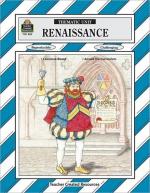|
This section contains 429 words (approx. 2 pages at 300 words per page) |

|
Local, territorial, and national law codes all regulated aspects of married life, including financial matters and spousal relations. The following is a section from the Law Code of the territory of Salzburg, Austria, from 1526.
It is to be accepted that both spouses have married themselves together from the time of the consummation of their marriage, body to body and goods to goods.
The husband shall not spend away the dowry or other goods of his wife unnecessarily with gambling or other useless frivolous pastimes, wasting and squandering it. Whoever does this is guilty of sending his wife into poverty. His wife, in order to secure her legacy and other goods she has brought to the marriage, may get an order requiring him to pledge and hold in trust for her some of his property. In the...
|
This section contains 429 words (approx. 2 pages at 300 words per page) |

|




